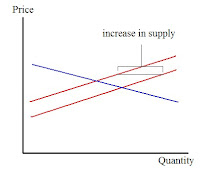9/11 Truth debunkers usually concern themselves with the obvious point of contention: the evidence. Invariably, they get bogged down in never-ending debates about obscure details of materials science, physical chemistry, and the like. But this is unnecessary. These debates just don't matter— and we can prove it logically. The solution lies, instead, with an 18th century Presbyterian minister.
Thomas Bayes was born in 1702. In 1763, two years after his death, his famous theorem surfaced at the Royal Society of London. Here is one formulation:
prior odds × likelihood ratio = posterior odds
This modest equation has earned Bayes immortality in the rationalist pantheon. It shows that, when evaluating a hypothesis, there's more to consider than just the evidence. Prior expectations also count.
As an example, let's suppose a man visits his doctor, suspecting he has a certain rare disease. Our hypothesis is that he has the disease. According to studies, only 1 in 10,001 people have it. The prior odds are therefore 1:10,000, which goes into our equation as 1/10,000.
The doctor then takes a blood sample and runs a test. The test is 99% accurate. It comes back positive, making the likelihood ratio 99. (Specifically, the likelihood ratio is the probability that the disease will cause the result — 99% — divided by the probability that a healthy person will cause the result — 1%.)
Now the man panics, but Thomas Bayes knew better. If we do the math to find the odds that the man has the disease, taking all data into account — if we multiply to find the the posterior odds — we get 99:10,000, or a slightly less than 1 in 100 chance that he has the disease:
1/10,000 × 99 = 99/10,000
In short, because the disease is so rare, he's 99 times more likely to be a healthy person with a false positive than someone with the disease. (There's an extensive introduction to Bayesian reasoning here, by Eliezer Yudkowsky, if this explanation is not doing the trick.)
On to the point: When thinking about 9/11 conspiracies, Bayes matters. This time let the hypothesis be that George Bush orchestrated 9/11. What are the prior odds (which exclude evidence collected after the event) that president Bush could have coordinated all of this? Given the complexity of the operation, it would have been very difficult. Dozens, if not hundreds, of top officials must have been involved, and all of them could have been treated like heroes if they had prevented it. How did he keep them from talking? How did he keep other people from noticing? The idea strains credulity. What about the angry Muslims hypothesis? After 50 years of malevolent U.S. intervention in the Middle East, it sounds plausible. Even more so after the U.S.S. Cole incident and other terrorist acts. Due to the extreme imbalance between the two options, the prior odds are very low. Since we need a number for the equation, let's go with 1:500 (if only to make the math easy).
What about the evidence collected after the disaster? It's plausible that it could have been caused by explosives. It's also plausible that 9/11 conspiracy theorists are not very good at forensics, and would make the same claims even if there were no explosives. So we can give the likelihood ratio a value of 1:1, which seems about right.
By choosing 1:1, we are saying that explosives and the official explanation are equally likely to cause our evidence. The man who panicked earlier would now panic again— there's a 50/50 chance that George Bush caused 9/11. But we know better. We need to account for our prior expectations. If we solve Bayes' equation — 1/500 × 1 = 1/500 — we find that it's still extremely unlikely that George Bush caused 9/11.
We can take this further. Our numbers so far have been based on crude guesswork. What if they were wrong? We can use more favorable numbers, and still we find that it's unlikely: 1/50 × 10 = 1/5. For an abstract equation based on so little data, Bayes' theorem provides us with surprisingly consistent answers.
In fact, given our earlier value of 1/500 for the prior odds, if we wanted to achieve merely 50/50 posterior odds that George Bush was responsible, the evidence collected after 9/11 would have to suggest a likelihood ratio of 500:1, meaning explosives were 500 times more likely to cause the evidence than planes alone. To get this number, we would have to find the detonator intact, and then get confessions from a dozen senior officials. And then find written instructions for the destruction of the twin towers in a drawer of the desk in the Oval Office.
The odds are against 9/11 Truthers.
